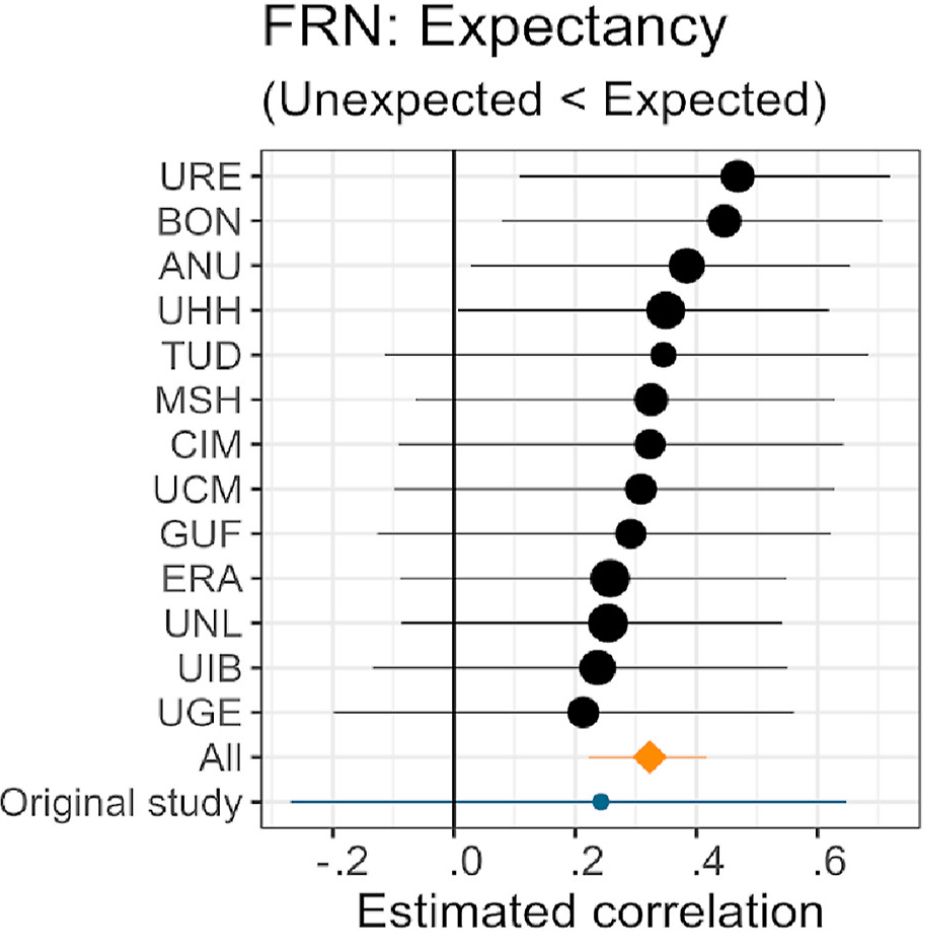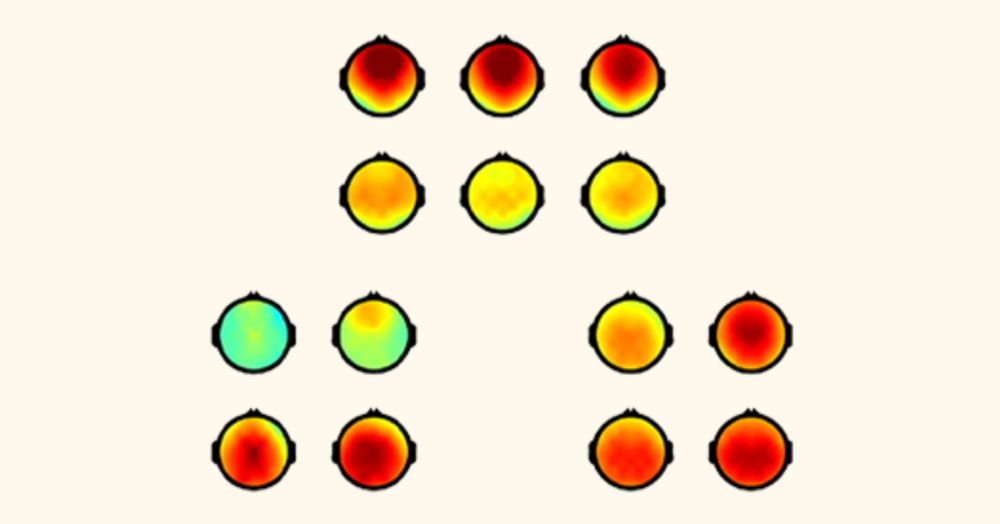Follow #EEGManyLabs on X and Bluesky for updates, threads on specific studies, and new Stage 2 results as they appear. Share the site with your lab and collaborators. Let’s build better EEG together.
20.08.2025 15:19 — 👍 0 🔁 0 💬 0 📌 0
Huge thanks to our community. Your contributions power inclusive, rigorous, high-impact EEG science.
20.08.2025 15:19 — 👍 0 🔁 0 💬 1 📌 0

We are also introducing our new mascot, Professor Cap-E (thank you to Aleksei Medvedev for the design).
20.08.2025 15:19 — 👍 3 🔁 0 💬 1 📌 0
It is not too late to join a replication team. Several projects are still recruiting new labs. You will find sign-up forms on the Replications page.
20.08.2025 15:19 — 👍 0 🔁 0 💬 1 📌 0
Redirecting
You will find Stage 1 protocols and Stage 2 results, with links to data, code, and materials.
Including a recently completed 22-lab replication of the foundational N2pc study by Eimer (1996): dx.doi.org/10.1016/j.co...
20.08.2025 15:19 — 👍 0 🔁 0 💬 1 📌 0
eegmanylabs
#EEGManyLabs website is now live: eegmanylabs.org
A home for our global effort to test the replicability of influential EEG findings, share resources, improve methods in cognitive neuroscience, and grow an open, connected community.
20.08.2025 15:19 — 👍 54 🔁 36 💬 1 📌 2
Redirecting
This is just the first in our #EEGManyLabs series—showing how collaborative EEG science can refine major theories. Watch this space for more. In the meantime, read the full paper for the deep dive: doi.org/10.1016/j.co...
Huge thanks to all labs involved!
07.02.2025 13:18 — 👍 0 🔁 0 💬 0 📌 0
One of the best parts? ✅ Minimal heterogeneity. ✅Across different EEG systems & participant samples, the pattern held strong, suggesting we have a robust and generalizable result.
07.02.2025 13:18 — 👍 1 🔁 0 💬 1 📌 0
The P300 also wasn’t as simple as “expectancy-only: we found both expectancy and valence effects. This implies that feedback evaluation is spread across multiple stages, rather than being sharply split into “FRN for valence” and “P300 for expectancy.”
07.02.2025 13:18 — 👍 0 🔁 0 💬 1 📌 0
The original study had only 17 participants—typical for its time but underpowered (~40% power). Our larger sample detected the small-to-moderate expectancy effect (ηp² = .08—identical to the original!).
🚫 Reminder: Absence of evidence ≠ Evidence of absence!
07.02.2025 13:18 — 👍 0 🔁 0 💬 1 📌 0

🚨 Results: The FRN isn’t just about valence! 🚨
It was significantly modulated by both:
✅ Valence (reward vs. no reward)
✅ Expectancy (expected vs. unexpected)
These results align more with Holroyd & Coles’ prediction error theory than Hajcak et al.’s original conclusion.
07.02.2025 13:18 — 👍 0 🔁 0 💬 1 📌 0
We put this to the test across 13 labs with 359 participants worldwide—a massive jump from the original n=17! Our goal? 🧐
🔍 Does the FRN really ignore expectancy?
🔍 Is the P300 only about surprises?
07.02.2025 13:18 — 👍 0 🔁 0 💬 1 📌 0
A new “two-stage” model proposed:
✅ FRN tracks valence (good vs. bad outcome)
✅ P300 tracks expectancy (surprise factor)
With 600+ citations, this study has shaped how researchers interpret feedback-locked ERPs.
07.02.2025 13:18 — 👍 0 🔁 0 💬 1 📌 0
But Hajcak et al. (2005) found something different: They found the FRN only distinguished reward vs. no reward, NOT whether an outcome was expected. 🤯 This challenged Holroyd & Coles’ reinforcement-learning theory and led to a new interpretation of feedback processing.
07.02.2025 13:18 — 👍 0 🔁 0 💬 1 📌 0
The original study (Hajcak, Holroyd, Moser, & Simons, 2005) tested a highly influential idea: Holroyd & Coles (2002) reinforcement learning model proposed that the FRN (feedback-related negativity) signals a better/worse-than-expected dopamine-driven prediction error.
07.02.2025 13:18 — 👍 1 🔁 0 💬 1 📌 0
Redirecting
🚨Exciting news! We now have the first-ever complete #EEGManyLabs replication. This large-scale multi-site study revisits a key debate in EEG & reinforcement learning. A thread! 🧵👇
📄 Full paper: doi.org/10.1016/j.co...
07.02.2025 13:18 — 👍 15 🔁 6 💬 2 📌 0



